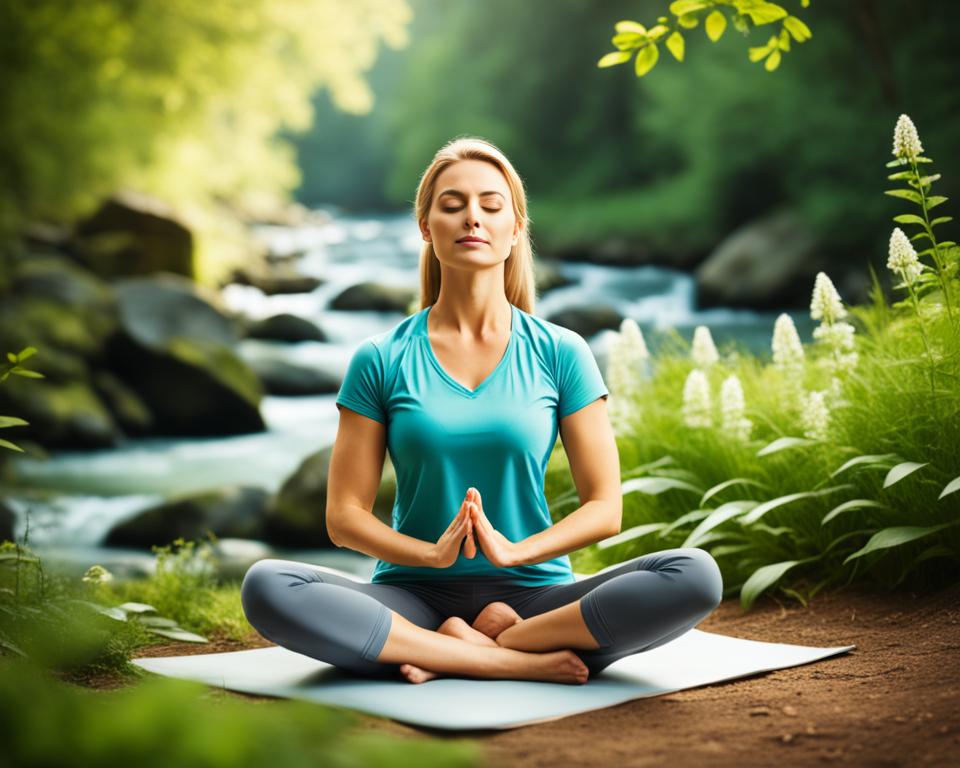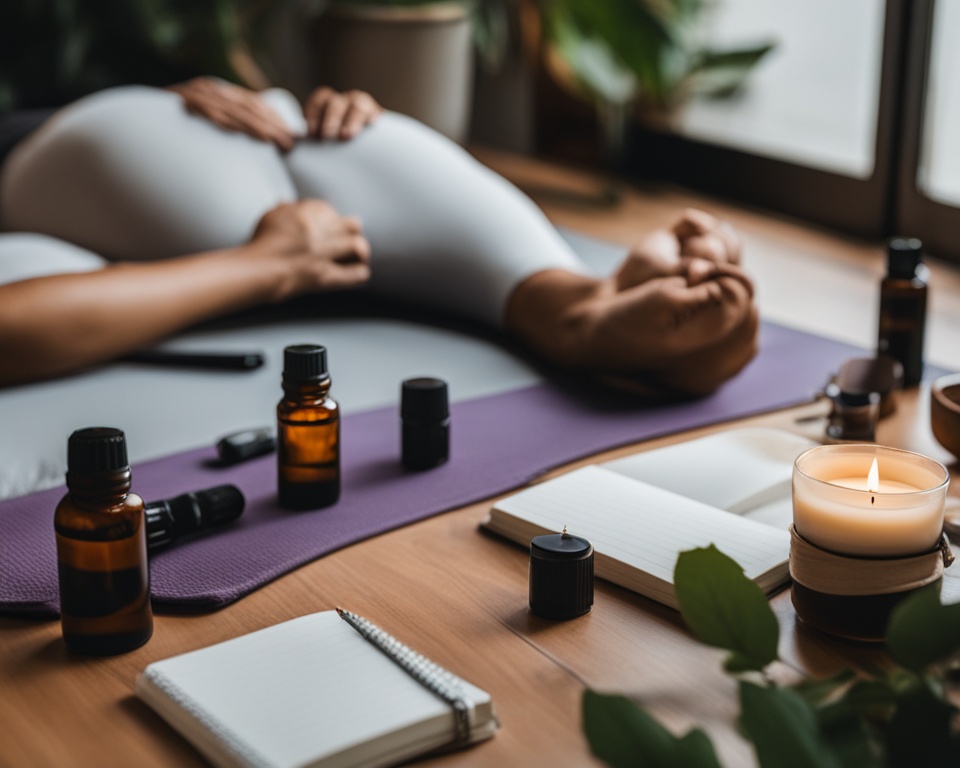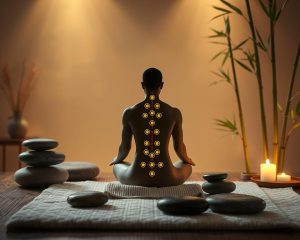
Relaxation techniques in psychology are a powerful set of tools that can help individuals reduce stress, anxiety, and promote overall well-being. This comprehensive guide will explore various relaxation practices, from deep breathing exercises to mindfulness meditation, and provide insights into how they can be effectively incorporated into daily life. By understanding the science behind these techniques and their proven benefits, readers will learn how to enhance their mental and physical health through the power of relaxation.
Read more interesting information at ::beauty-hair-news
Introduction to Relaxation Techniques
Relaxation techniques in psychology are a set of practices that aim to reduce stress, anxiety, and promote a sense of calm and well-being. These techniques are widely recognized as an essential component of holistic mental health management. The importance of relaxation for mental health lies in its ability to counteract the physiological and psychological effects of stress, which can have detrimental consequences if left unchecked.
Importance of Relaxation for Mental Health
Stress can have a significant impact on an individual’s mental well-being, leading to symptoms such as anxiety, depression, and difficulty concentrating. By incorporating relaxation techniques in psychology, individuals can actively manage their stress levels and promote a healthier state of mind. These practices help to activate the parasympathetic nervous system, which is responsible for the body’s “rest and digest” response, counteracting the physiological effects of stress.
Benefits of Incorporating Relaxation Practices
When individuals integrate relaxation practices into their daily routine, they can experience a range of benefits, including improved mood, increased focus and concentration, better sleep quality, and enhanced overall well-being. By taking the time to pause and engage in relaxation techniques, individuals can cultivate a greater sense of inner calm and emotional resilience, which can positively impact various aspects of their lives.
Deep Breathing Exercises
Deep breathing exercises are a fundamental relaxation technique in psychology that can effectively reduce stress and promote a state of calm. These breathing exercises focus on engaging the diaphragm, the large muscle located at the base of the lungs, to take slow, deep breaths rather than shallow chest breathing.
Diaphragmatic Breathing Technique
One of the most commonly recommended deep breathing exercises is diaphragmatic breathing, also known as belly breathing. This method involves inhaling slowly through the nose, allowing the abdomen to expand, and then exhaling slowly through the mouth. By focusing on the movement of the diaphragm, individuals can induce a relaxation response and alleviate the physiological symptoms of stress.
4-7-8 Breathing Method
Another popular deep breathing technique is the 4-7-8 breathing method. This exercise involves inhaling for 4 seconds, holding the breath for 7 seconds, and then exhaling for 8 seconds. This deliberate pacing helps to activate the parasympathetic nervous system, responsible for the body’s rest and digest functions, promoting a state of deep relaxation.
Both diaphragmatic breathing and the 4-7-8 breathing method can be practiced regularly to help individuals manage stress, anxiety, and other mental health concerns. Incorporating these deep breathing exercises into daily routines can be a powerful tool for enhancing overall well-being.
Progressive Muscle Relaxation
Progressive muscle relaxation is a powerful relaxation technique in psychology that involves systematically tensing and releasing different muscle groups throughout the body. This practice helps individuals become more aware of physical tension and learn how to consciously relax their muscles. By alternating between muscle tension and relaxation, the progressive muscle relaxation technique allows the body and mind to enter a state of deep relaxation, reducing stress and promoting a profound sense of calm.
The process of progressive muscle relaxation typically involves focusing on one muscle group at a time, such as the hands, arms, shoulders, or legs. Individuals will start by tensing the muscle group for a few seconds, then slowly releasing the tension and allowing the muscles to relax. This systematic approach helps individuals identify areas of physical tension and actively work to release it, leading to a heightened awareness of their body’s response to stress.
One of the key benefits of progressive muscle relaxation is its versatility and wide range of applications. This technique has been effectively used to manage various conditions, including anxiety, chronic pain, and insomnia. By learning to control and relax their muscles, individuals can not only alleviate physical symptoms but also experience a deeper sense of mental and emotional well-being.
Incorporating progressive muscle relaxation into a regular self-care routine can be a powerful tool for managing stress and promoting overall relaxation. Whether practiced as a standalone technique or in conjunction with other relaxation practices, such as deep breathing or guided imagery, progressive muscle relaxation offers a comprehensive approach to enhancing one’s mental and physical health.
Guided Imagery
Guided imagery is a relaxation technique in psychology that involves the use of visualization and imagination to promote relaxation and reduce stress. By picturing a peaceful, calming scene or experience, individuals can activate their senses and enter a state of deep relaxation. Visualization for stress relief can be particularly effective, as it allows the mind to focus on a positive, serene image rather than ruminating on stressful thoughts.
Creating a Personal Relaxation Script
Additionally, individuals can create their own personalized relaxation script, incorporating elements that are most meaningful and soothing to them, further enhancing the effectiveness of the technique. This customized approach to guided imagery allows people to tailor the practice to their specific needs and preferences, making it a valuable tool in their overall stress management efforts.
Meditation Practices
Meditation practices are a powerful set of relaxation techniques in psychology that can help individuals cultivate a state of deep relaxation and present-moment awareness. These practices range from mindfulness meditation, which focuses on directing attention to the breath and immediate sensations, to transcendental meditation, which involves the silent repetition of a personalized mantra. Additionally, the body scan meditation technique can assist individuals in becoming more attuned to their physical sensations and release tension.
Mindfulness Meditation
Mindfulness meditation is a meditation practice that emphasizes directing attention to the breath and the immediate sensations experienced in the body and mind. This approach promotes a non-judgmental, accepting attitude, allowing individuals to become more present and aware of their thoughts, emotions, and physical experiences. By cultivating this state of mindfulness, practitioners can reduce stress, increase focus, and enhance their overall well-being.
Transcendental Meditation
Transcendental meditation is a technique that involves the silent repetition of a personalized mantra to induce a state of deep relaxation and inner calm. This practice is designed to reduce stress and promote a sense of balance and clarity. By focusing on the mantra, individuals can quiet the mind, allowing them to access a deeper level of relaxation and self-awareness.
Body Scan Meditation
The body scan meditation technique involves systematically directing attention to different areas of the body, from the toes to the head. This practice can help individuals become more attuned to their physical sensations and release any accumulated tension or discomfort. By focusing on the breath and the subtle movements and sensations within the body, practitioners can achieve a state of deep relaxation and inner peace.
Mindfulness Techniques
Mindfulness techniques are a set of relaxation practices in psychology that emphasize present-moment awareness and acceptance. These techniques can help individuals cultivate a greater sense of calm and inner peace throughout their daily lives.
Mindful Eating
One example of a mindfulness technique is mindful eating, which involves paying close attention to the sensations, flavors, and textures of food during the eating process. This practice can help individuals become more aware of their body’s hunger and satiety cues, as well as cultivate a sense of gratitude and enjoyment during meals. By focusing on the present moment and the experience of nourishing the body, mindful eating can promote a healthier relationship with food and a more balanced approach to eating.
Walking Meditation
Another mindfulness technique is walking meditation, which involves slow, deliberate movements while maintaining a focused, non-judgmental awareness of the body and the surrounding environment. This practice encourages individuals to be fully present in the moment, rather than dwelling on the past or worrying about the future. By bringing attention to the physical sensations of walking and the sights, sounds, and smells of the immediate surroundings, walking meditation can help individuals achieve a state of deep relaxation and inner calm.
Yoga for Relaxation
Yoga is a well-recognized relaxation technique in psychology that combines physical postures, breath control, and meditation. Gentle yoga poses, such as child’s pose, easy twist, and reclined butterfly, can help calm the mind and release physical tension. By slowing down the pace and emphasizing the breath, yoga can induce a state of deep relaxation, which can be particularly beneficial for individuals dealing with stress, anxiety, or chronic pain.
Gentle Yoga Poses
Gentle yoga poses, like child’s pose, easy twist, and reclined butterfly, are designed to promote a sense of tranquility and inner peace. These postures encourage the body to release tension, while the focused attention on the breath helps to quiet the mind. By incorporating these gentle yoga poses into a relaxation routine, individuals can experience a profound sense of calm and restoration.
Restorative Yoga
Restorative yoga, on the other hand, focuses on deeply relaxing the body and mind through the use of props, such as blankets and bolsters, to support the body in passive, comfortable positions. This style of yoga for relaxation emphasizes the importance of slowing down and allowing the body to fully surrender, which can be particularly beneficial for those dealing with chronic stress, anxiety, or physical discomfort. By creating a nurturing, supportive environment, restorative yoga can help individuals achieve a state of profound relaxation and rejuvenation.
Biofeedback Training
Biofeedback training is a captivating relaxation technique in psychology that involves the use of electronic devices to provide real-time feedback on physiological processes, such as heart rate, muscle tension, and skin temperature. By becoming more aware of these bodily functions, individuals can learn to consciously control and regulate them, enabling them to enter a state of deep biofeedback training.
Understanding Biofeedback
The principle behind understanding biofeedback is to empower individuals to gain a deeper awareness of their body’s responses to stress and other stimuli. Through the use of specialized equipment, such as sensors and monitoring devices, individuals can observe the subtle changes in their physiological state, allowing them to develop a greater understanding of the connection between their mind and body.
Applications in Stress Management
Biofeedback has various applications in stress management, as it can help individuals identify and respond to the physical manifestations of stress, ultimately reducing its negative impact on their well-being. By learning to regulate their physiological responses, individuals can effectively manage anxiety, reduce muscle tension, and improve their overall sense of calm and relaxation. This makes biofeedback an invaluable tool in the pursuit of optimal mental and physical health.
Autogenic Training
Autogenic training is a relaxation technique in psychology that involves a series of mental exercises designed to induce a state of deep autogenic training. Through this practice, individuals learn to focus their attention on specific physical sensations, such as warmth and heaviness in the limbs, to elicit a relaxation response.
Self-Hypnosis Techniques
Autogenic training also incorporates elements of self-hypnosis techniques, where individuals are guided to enter a deeply focused, trance-like state, allowing them to better manage stress, anxiety, and other mental health concerns. By harnessing the power of the mind, autogenic training empowers individuals to take an active role in their well-being and cultivate a profound sense of inner calm and control.

Integrating Relaxation Techniques into Daily Life
Incorporating relaxation techniques into one’s daily routine is crucial for maximizing their benefits and promoting long-term well-being. This may involve setting aside dedicated time for relaxation practice, such as incorporating a short meditation or deep breathing exercise into one’s morning routine.
Overcoming Barriers to Practice
However, individuals may face various barriers to consistent relaxation practice, such as a perceived lack of time, difficulty in maintaining focus, or a general resistance to trying new techniques. By acknowledging and addressing these barriers, individuals can develop strategies to overcome them and make relaxation a sustainable part of their lifestyle.
One common challenge is the perception of not having enough time to dedicate to relaxation practices. To address this, individuals can explore ways to integrate short, impactful exercises into their daily routines, such as taking a few minutes for deep breathing during a work break or practicing mindful walking during their commute.
Another potential barrier is the difficulty in maintaining focus and attention during relaxation exercises. This can be overcome by starting with short, guided practices and gradually increasing the duration as individuals become more comfortable and skilled in the techniques. Seeking out resources, such as apps or instructional videos, can also provide valuable support and guidance.
Finally, some individuals may be resistant to trying new relaxation techniques, either due to preconceived notions or a lack of understanding about their benefits. Educating oneself on the science and proven effects of various relaxation practices can help overcome this resistance and foster a greater openness to incorporating them into daily life.
By addressing these barriers and developing personalized strategies for integrating relaxation techniques into daily routines, individuals can unlock the full potential of these powerful tools for enhancing their overall well-being and resilience.
Relaxation Techniques for Specific Conditions
Relaxation techniques in psychology can be particularly beneficial for individuals dealing with specific mental and physical health conditions. By understanding how these practices can address the unique needs of different populations, individuals can better tailor their relaxation routines to achieve optimal results.
Anxiety Disorders
For those struggling with anxiety disorders, relaxation techniques like deep breathing, progressive muscle relaxation, and mindfulness meditation can be highly effective in alleviating symptoms and promoting a sense of calm. By focusing on the breath and cultivating present-moment awareness, individuals can interrupt the physiological and psychological cycle of anxiety, finding relief from its debilitating effects.
Chronic Pain Management
Individuals experiencing chronic pain may find that relaxation techniques like guided imagery, yoga, and biofeedback can help manage their discomfort and improve their overall quality of life. These practices can create a mind-body connection, allowing individuals to better understand and regulate their physical sensations, ultimately reducing the intensity and duration of pain episodes.
Insomnia and Sleep Issues
For those struggling with insomnia and other sleep-related issues, relaxation techniques such as body scan meditation and autogenic training can be highly beneficial. By inducing a state of deep relaxation and promoting a sense of physical and mental tranquility, these practices can help individuals overcome the obstacles to restful, restorative sleep, leading to improved energy, focus, and overall well-being.
By incorporating relaxation techniques tailored to specific conditions, individuals can experience a comprehensive approach to addressing their mental and physical health concerns, enhancing their overall quality of life and resilience.
Combining Relaxation Techniques
While individual relaxation techniques can be highly effective, the most beneficial approach often involves combining various practices to create a personalized relaxation routine. This allows individuals to leverage the unique benefits of different techniques and find the optimal combination that resonates with their personal preferences and needs.
Creating a Personalized Relaxation Routine
For example, an individual may start their day with a few minutes of deep breathing, followed by a short mindfulness meditation session, and then conclude their evening with a gentle yoga practice. By experimenting and tailoring a relaxation routine to their specific requirements, individuals can enhance the overall effectiveness of their stress management efforts and promote long-term well-being.

The key to creating a personalized relaxation routine is to explore a variety of relaxation techniques and find the ones that work best for your individual needs and preferences. By combining different practices, you can create a holistic approach to relaxation and stress management that addresses your physical, mental, and emotional well-being.
Resources for Learning Relaxation Techniques
Individuals interested in exploring and incorporating relaxation techniques into their lives have access to a wealth of resources. Comprehensive books and online guides provide detailed instructions, step-by-step tutorials, and in-depth explanations of various relaxation practices, such as meditation, yoga, and biofeedback. These resources can be valuable for individuals who prefer self-guided learning.
Books and Online Guides
From classic titles like “The Relaxation Response” by Herbert Benson to modern digital resources like the “Headspace” app, there is no shortage of materials available to help individuals dive into the world of relaxation techniques. These resources often cover a wide range of practices, offering insights into the science behind them and providing practical guidance on how to incorporate them into daily life.
Local Classes and Workshops
In addition to self-guided learning, many local communities offer classes and workshops led by qualified instructors, providing opportunities for hands-on guidance and group practice. Whether it’s a weekly yoga session, a mindfulness meditation workshop, or a biofeedback training program, these in-person experiences can be invaluable for those seeking a more immersive and interactive approach to learning relaxation techniques. Seeking out these educational resources can help individuals develop a deeper understanding of relaxation practices and facilitate their successful integration into daily life.






